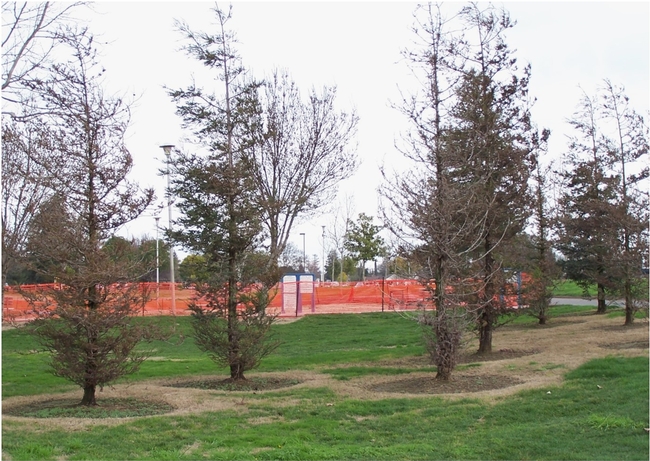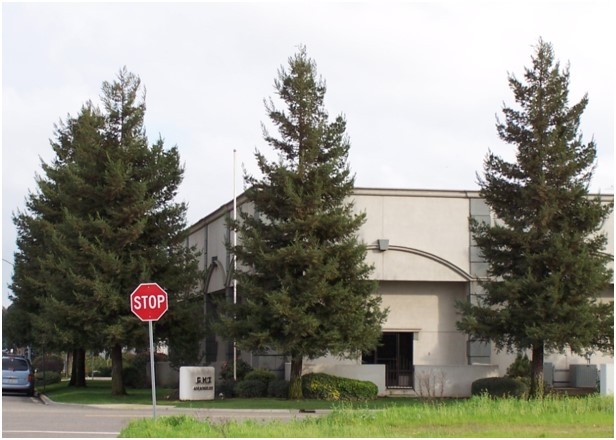- Author: Ed Perry
Although many coast redwoods (Sequoia sempervirons) appear to grow well in some parts of the San Joaquin Valley, the UCCE Master Gardeners are often contacted for help diagnosing redwoods with dead branches that seem to be dying.
It's important to remember that coast redwoods are native to the coasts of Central and Northern California. In this environment, the trees are shaded by each other and experience significant cooling from fog. They also receive moisture from fog drip and high rainfall. In their native forests, redwoods grow with large amounts of forest litter over their roots.

While coast redwood trees are susceptible to some serious diseases, they are most often injured or killed by abiotic (non living) problems. High soil salinity caused by excess sodium (alkaline soil), and toxicity caused by high concentrations of specific ions such as boron and chlorides will stunt their growth and cause their leaves to turn yellow and “burn.” They grow poorly in heavy soils that are too wet, or in dry, compacted soils with poor drainage. Coast redwoods are also susceptible to iron deficiency, especially in high pH soils. They may be injured by freezing temperatures, especially in dry soil. Because they are adapted to a cool, moist environment, they will develop brown and scorched leaves during our hot and dry summers, especially if they're not adequately watered. Drought stressed trees may then be attacked by bark beetles.
In dry or compacted soils the trees grow slowly and their trunks develop a distinct taper. Under ideal soil and moisture conditions, such as along portions of the California Coast, the trunks will be nearly the same diameter from the base of the tree to several feet high. Some brown foliage in the interior of the tree is normal. In fact, it is normal for the oldest leaves to turn yellow, then brown, and finally drop from the tree in late summer and early fall. It is also normal for short twigs to turn brown and fall. New growth at the ends of branches indicates that the branches are alive and healthy, despite some dieback of twigs and leaves.

As mentioned, coast redwoods are susceptible to some diseases. In Stanislaus County, redwoods infected by Botryosphaeria canker (Botryosphaeria dothidea), crown rot (Phytophthora sp.) and Armellaria root rot (Armillaria mellea) have been identified. However, these diseases are relatively uncommon on redwoods here. If you're trying to diagnose a redwood problem, be sure to consider soil and water-related problems first.
Redwoods are forest trees. We have cultivated them for use in non-forest landscapes as street and park trees, and as specimen trees. These conditions are not always favorable to their growth or long term establishment. They grow best with shade, cool root systems, abundant mulch, and continual moisture that is relatively salt free. If you can create some of these conditions in the landscape, redwood culture and disease management will be much less problematic.
Ed Perry is the emeritus Environmental Horticultural Advisor for University of California Cooperative Extension (UCCE) in Stanislaus County where he worked for over 30 years.

